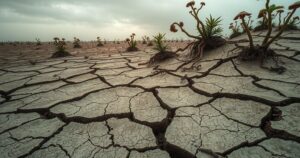Lebanon’s Economic Monitor: Projected Growth Amidst Ongoing Challenges

Amidst political fragility and economic challenges, Lebanon’s real GDP growth is projected at 4.7% in 2025. The World Bank’s Lebanon Economic Monitor revises past estimates with expectations of inflation moderating to 15.2%. A comprehensive one-year action plan for government reforms aims to restore stability and foster economic recovery.
Lebanon is experiencing a projected real GDP growth of 4.7% for the year 2025, buoyed by an anticipated recovery in key sectors such as tourism and consumption, as outlined in the latest Lebanon Economic Monitor, released by the World Bank. However, this optimistic forecast comes amidst a backdrop of political fragility and ongoing financial challenges which continue to hinder significant foreign investment and financial inflows, according to the report released in Beirut on June 19, 2025.
The Spring 2025 edition of this report, titled “Turning the Tide?”, updates earlier forecasts, now anticipating a deeper real GDP contraction of 7.1% for 2024, revised from an earlier estimate of 5.7%. This downward revision has brought the cumulative economic decline since 2019 to almost 40%. Inflation is expected to moderate to 15.2% in 2025, contingent on stability in the exchange rate and global inflation trends. While a balanced 2025 budget and enhanced revenue collection may allow for slight increases in public spending, significant fiscal pressures persist, necessitating comprehensive structural reforms for sustainability.
Jean-Christophe Carret, the World Bank’s Middle East Division Director, noted, “Recent political developments brought renewed momentum and offer an opportunity to address the fundamentals of Lebanon’s overlapping financial, economic, and institutional crises.” He emphasized the importance of prioritizing high-impact measures, suggesting these could instigate a path toward sustainable recovery for the country.
The report also delves into the implications of global trade uncertainties on Lebanon’s economy. Though direct effects seem minimal — with exports to significant markets constituting only about 4% of total goods exports — the report warns the indirect impacts are unpredictable, hinging on how shifts in global trade influence local investment, inflation, and overall economic productivity.
Special analyses on inflation trends indicate that while Lebanon’s inflation followed international patterns prior to the financial crisis, since 2019 it has largely been driven by currency depreciation. As the country experiences increased dollarization alongside a stable exchange rate, the report suggests inflation could return to pre-crisis levels, though it may remain elevated due to ongoing domestic issues. The real effective exchange rate has fluctuated sharply during the crisis but failed to result in improved export performance, primarily due to existing structural constraints.
Additionally, the report includes an in-depth Special Focus section that outlines a comprehensive action plan intended to support government reform initiatives. Drawing lessons from two decades of engagement with Lebanon, the action plan details feasible, high-impact actions aligning with the government’s objectives, aimed at being executed during its limited time frame. Key proposals involve steps to restore macro-financial stability, re-establish citizens’ trust, and create a foundation for an innovative economic development model.
In summary, Lebanon’s economic future shows potential for growth in 2025, yet it remains tethered to a complex web of challenges. The economic outlook is hoping for a turnaround fueled by reforms and recovery efforts, while continued fiscal pressures and a fragile political landscape loom overhead. The urgency for substantive structural reforms is evident as the country navigates through its overlapping crises.
Original Source: reliefweb.int








